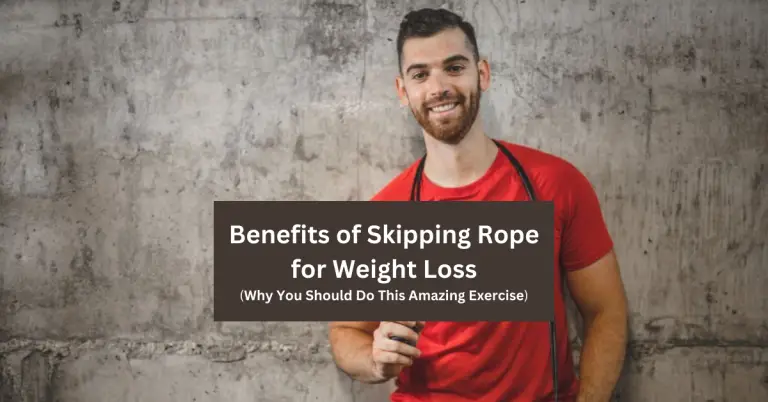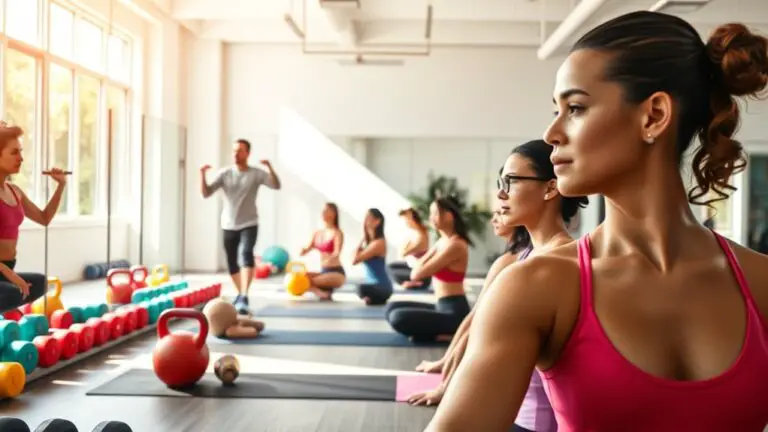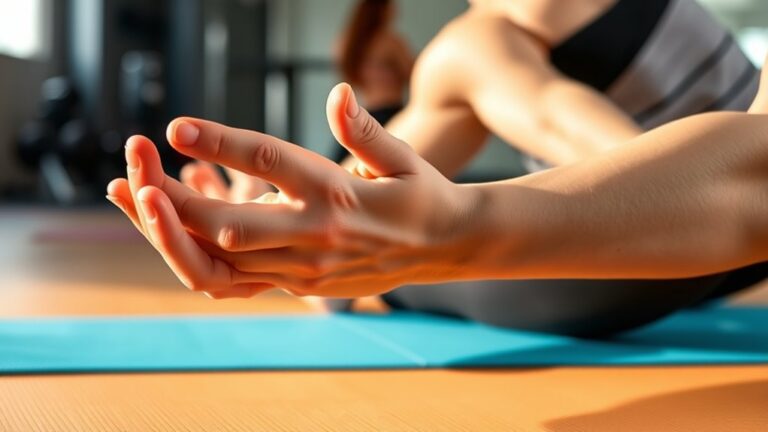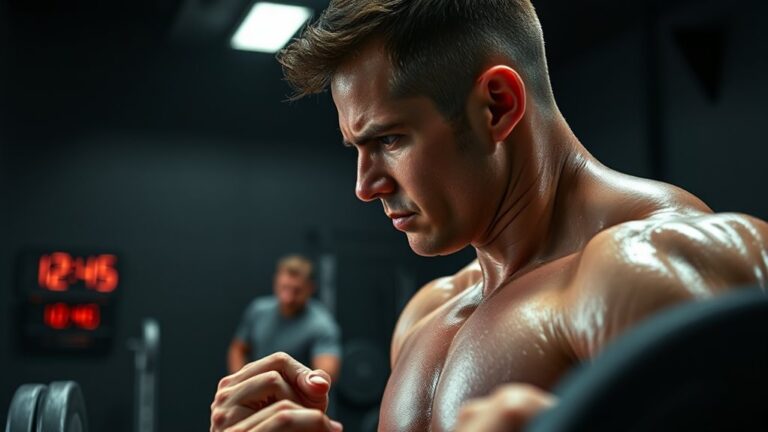How to Get a V-Shaped Upper Body
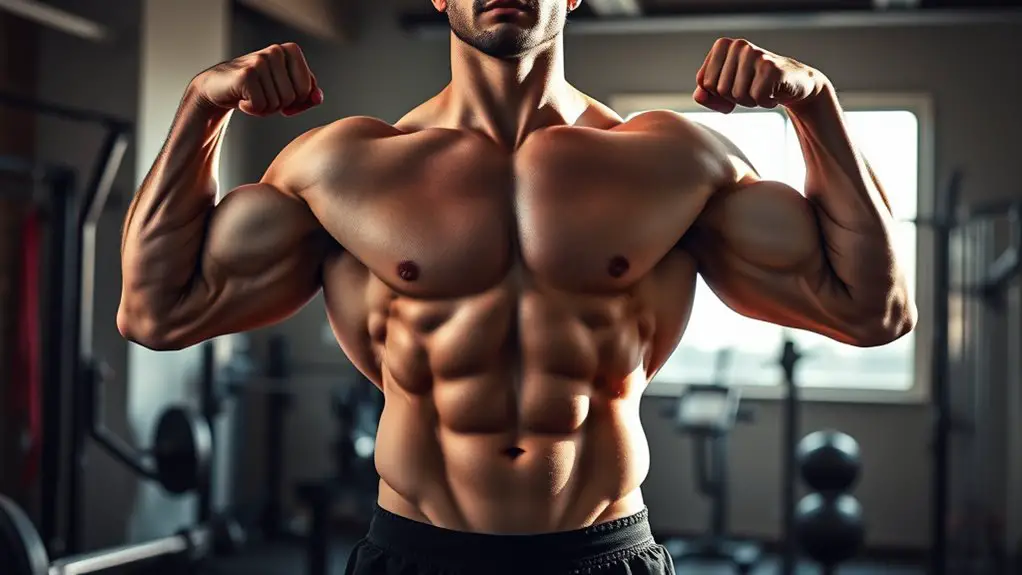
To get a V-shaped upper body, focus on building broad shoulders and a tapered waist. Incorporate exercises like overhead presses, pull-ups, and bent-over rows to target your shoulders and back. Don’t forget to strengthen your core with planks and bridges for balance. Proper nutrition, high in protein, will support muscle growth. Regular cardio helps with fat loss too. Stick around, and you’ll discover more tips for achieving that ideal physique.
Understanding the V-Shape Physique
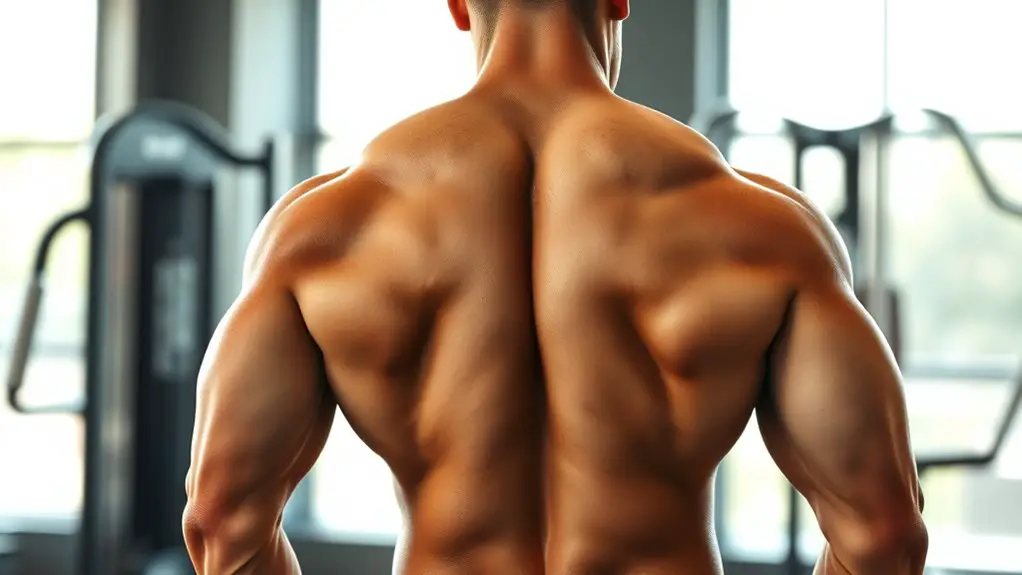
To achieve a V-shaped upper body, it’s essential to understand what this physique entails. The V shape definition typically refers to broad shoulders tapering down to a narrower waist, creating an athletic and balanced silhouette. This look isn’t just about aesthetics; it comes with several physique benefits.
For one, a V-shaped upper body can enhance your overall appearance, making you look more fit and strong. It also promotes better posture, as developing your upper body muscles encourages you to stand taller and more confidently. Additionally, this physique can improve your functional strength, making daily activities easier and safer.
Focusing on achieving a V-shaped upper body can positively impact your self-esteem and motivation, encouraging you to maintain a healthy lifestyle. Remember, prioritizing safety during workouts and making gradual progress is key to enjoying these benefits without risking injury.
Key Muscle Groups to Target
Achieving a V-shaped upper body requires targeting specific muscle groups that contribute to that desired silhouette. Focus on your shoulders and back, as these are essential for enhancing shoulder width and back thickness.
To build shoulder width, pay attention to your deltoid muscles. Strong deltoids create a broader appearance, making your waist seem narrower in comparison.
For back thickness, concentrate on the latissimus dorsi and trapezius muscles. Developing these areas not only adds bulk to your back but also helps with posture, which is important for overall safety during workouts.
Incorporating exercises that engage these muscle groups will set a solid foundation for achieving that V-shape. Remember to maintain proper form and start with manageable weights to prevent injuries. Additionally, including exercises like the single-arm dumbbell overhead press can help address muscle imbalances and promote shoulder strength. By diligently focusing on these key muscle groups, you’ll be on your way to sculpting an impressive upper body.
Effective Exercises for Building Width
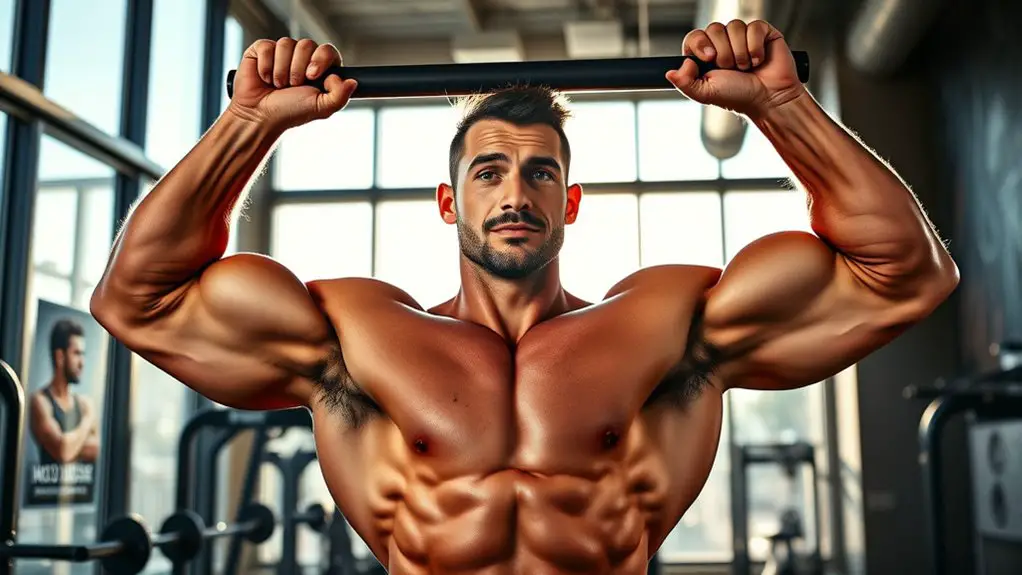
To achieve that V-shaped upper body, you’ll want to focus on exercises that build width in your shoulders and back. Essential shoulder exercises, along with back-widening workouts, are key to creating that desired silhouette. Let’s explore some effective moves to help you expand your upper frame.
Essential Shoulder Exercises
Building width in your shoulders is essential for achieving that coveted V-shaped upper body. To start, focus on exercises that promote shoulder mobility, such as arm circles and band pull-aparts. These movements increase flexibility and prepare your shoulders for more intense workouts. Incorporate overhead presses into your routine; they’re excellent for building mass and strength in your deltoids. Use dumbbells or a barbell, but always prioritize proper form to prevent injury. Start with a manageable weight and gradually increase as you gain strength. Remember to warm up before workouts and cool down afterward to enhance recovery. With consistent effort and attention to safety, you’ll be well on your way to broadening those shoulders effectively.
Back-Widening Workouts
While shoulder exercises are essential for a V-shaped upper body, back-widening workouts play an equally important role in creating that desired silhouette. Incorporating pull up variations, like wide-grip and chin-ups, can effectively target the lats, helping you achieve that broad look safely. Start with bodyweight pull ups if you’re new, and gradually add resistance training with a weighted vest or resistance bands for added challenge.
Additionally, consider exercises like bent-over rows and lat pulldowns, which also promote width. Remember to focus on proper form to prevent injury and guarantee you’re engaging the right muscles. By consistently including these back-widening workouts in your routine, you’ll be on your way to a more defined V-shape without compromising safety.
Strengthening Your Core for Balance
As you work towards achieving a V-shaped upper body, strengthening your core is vital for maintaining balance and stability during your workouts. A strong core enhances your overall performance and reduces the risk of injury. Focus on exercises that promote core stability, such as planks, bridges, and rotational movements. These exercises not only engage your abdominal muscles but also help in developing the muscles around your back and hips, which are essential for balance training.
Incorporate balance challenges, like single-leg exercises or stability ball workouts, to further enhance your core strength. Remember, proper form is key; it’ll keep you safe and effective. Avoid rushing through movements—take your time to guarantee you’re engaging the right muscles. By prioritizing core stability, you’ll not only improve your workout efficiency but also support your journey towards that coveted V-shape. Furthermore, including low impact exercises like skipping rope can significantly enhance your cardiovascular health while engaging multiple muscle groups. Stay consistent, and you’ll notice the benefits in no time!
The Role of Nutrition in Muscle Development

Nutrition plays an essential role in muscle development, as the right food choices can greatly enhance your workout results. To build a V-shaped upper body, focus on your calorie intake and guarantee you’re consuming enough to support your training. Aim for a balanced diet that includes high-quality protein sources like lean meats, fish, dairy, beans, and legumes. Protein is vital for muscle repair and growth, so don’t skimp on it.
Additionally, monitor your carbohydrate and fat intake to fuel your workouts effectively. Whole grains, fruits, and healthy fats should also have a place in your meals. Staying hydrated is equally important, as water supports overall performance and recovery. Remember, it’s not just about eating more; it’s about eating right. By prioritizing nutrition alongside your training regimen, you’ll create a solid foundation for developing that desired V-shape in your upper body safely and effectively.
Incorporating Cardio for Fat Loss
To achieve a V-shaped upper body, incorporating cardio into your routine is essential, especially for shedding excess fat. A well-rounded cardio regimen can help you burn calories and improve your heart health. You might consider adding high intensity intervals to your workouts. These short bursts of intense activity followed by rest can maximize fat loss and elevate your metabolism.
On days when you want a gentler approach, steady state cardio is a great option. Activities like jogging, cycling, or swimming at a consistent pace can help you maintain a calorie deficit without risking overexertion. Additionally, incorporating exercises like skipping rope into your routine can enhance your cardiovascular health while providing a full-body workout.
Aim for a balance between both methods to keep your body challenged and engaged. Just remember, it’s important to listen to your body and allow for adequate recovery. By integrating these cardio techniques into your routine, you’ll be on your way to achieving that desired V-shape safely and effectively.
Creating a Balanced Workout Plan
While crafting a balanced workout plan, it’s essential to incorporate a mix of strength training, cardio, and flexibility exercises. This balanced approach not only helps build a V-shaped upper body but also reduces the risk of injury. Make sure to schedule your workout frequency wisely and include adequate rest days to allow your muscles to recover. Regular cardio activities like skipping rope can enhance your overall cardiovascular health while contributing to fat loss.
| Workout Type | Frequency per Week | Notes |
|---|---|---|
| Strength Training | 2-3 times | Focus on upper body areas |
| Cardio | 3-4 times | Choose low-impact options |
| Flexibility | Daily | Incorporate stretching |
Listen to your body. If you feel fatigued, take an extra rest day to avoid overtraining. This balanced approach will help you achieve your fitness goals safely and effectively.
Frequently Asked Questions
How Long Does It Take to Achieve a V-Shaped Upper Body?
It’s natural to wonder how long it’ll take to see results, especially if you’re busy. But remember, committing to a consistent workout routine is key. Typically, you might start noticing changes in your upper body within a few months, depending on factors like your starting point and dedication. Just focus on gradual progress and stay safe with proper techniques. With patience and effort, you’ll be well on your way to achieving your fitness goals!
Can Women Also Achieve a V-Shaped Physique?
Absolutely, women can achieve a v-shaped physique! It’s all about understanding muscle types and tailoring your workouts. By focusing on strength training with a mix of high-intensity intervals, you can build muscle while burning fat safely. Incorporating exercises that target the shoulders and back will help create that desired shape. Just remember to listen to your body and prioritize form over intensity to prevent injuries while you work towards your goals.
What Are the Best Supplements for Muscle Growth?
What if you could boost your muscle growth safely and effectively? The best supplements often include high-quality protein sources, like whey or plant-based options, which can aid in recovery and muscle synthesis. Timing is essential, so consider taking them around your workouts for maximum results. Remember, it’s important to consult with a healthcare professional before starting any supplement regimen to make certain it’s right for your individual needs and goals.
Is Genetics a Factor in Achieving a V-Shape?
Yes, genetics do play a role in achieving that desired v-shape. Your genetic predisposition influences your body composition, including how you store fat and build muscle. While you can certainly enhance your physique through exercise and nutrition, it’s important to acknowledge that some aspects are beyond your control. Focus on what you can change safely, like developing strength and maintaining a balanced diet, rather than fixating solely on genetic factors.
How Often Should I Change My Workout Routine?
You should change your workout routine every 4-6 weeks to keep your body challenged and avoid plateaus. Routine variation is essential for muscle growth and overall fitness progress. However, listen to your body and adjust your workout frequency based on how you feel. If you’re experiencing fatigue or soreness, consider extending the duration between changes. Remember, consistency is key, but safety always comes first, so prioritize recovery when needed.
